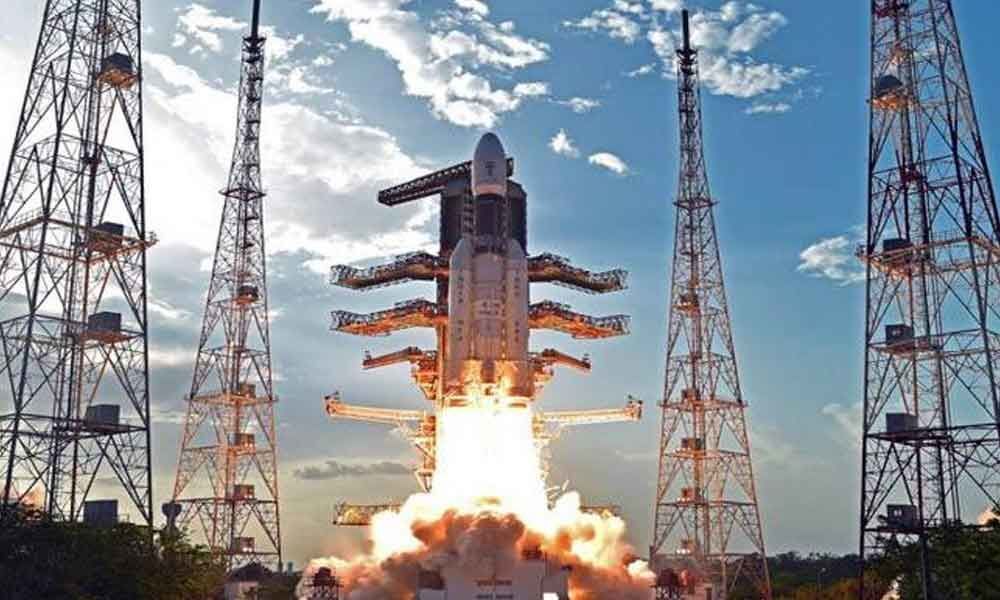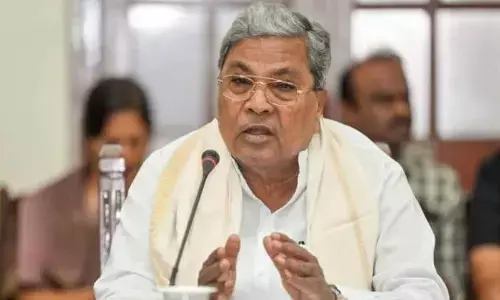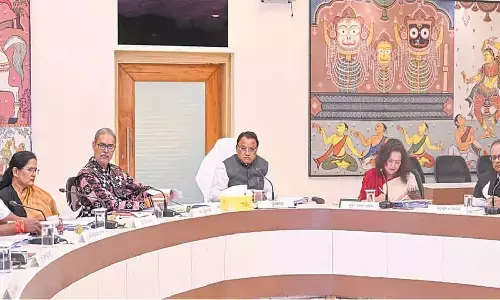Law needed for commercialising India's space activities
 Law needed for commercialising India’s space activities
Law needed for commercialising India’s space activitiesEMISAT specialises in collecting information of strategic value, in electromagnetic spectrum.
The successful launch of the electronic intelligence satellite EMISAT by ISRO has created another milestone in the history of India's successful space missions. The satellite includes 28 other nano satellites of various other countries under the 47th mission of the Indian Polar Satellite Launch Vehicle (PSLV) named PSLV-C45. EMISAT specialises in collecting information of strategic value, in electromagnetic spectrum.
Defence Research and Development Organisation (DRDO) have been significantly involved in developing its devices.The satellites have been launched under an agreement with the Antrix Corporation, ISRO's commercial arm.The success has also opened doors for discussion on commercialisation and privatisation of space activities in India.
This comes days after DRDO's successful testing of an anti-satellite missile with Mission Shakti that boosts India's national security. With the success of Mission Shakti in the last week, India has also demonstrated its satellite technological capability by hitting a live satellite 300 km away in the low earth orbit (LEO) which is a major milestone in the history of India's Space Programme.
This missile technology aimed at strengthening India's overall security and became fourth country in the world after United States, Russia and China. There is every reason for the country to feel proud of this historic achievement of our scientists under very demanding time schedules and other constraints.
Earlier, with the successful take off of 'Mangalyaan' India also took a giant leap in its march to MARS planet and became fourth country in the world to undertake such a Mission close on the heels of USA, Russia and EU and leaving China well behind. By successful launch of 104 satellites on a single mission on February 14, 2017, India created history by overtaking the previous record of 37 satellites launched by Russia in 2014.
With the launch of 11 satellites from one space vehicle, India displayed its prowess in space technology in the year 2008. In February, 2013 with the successful launch of 6 satellites has once again proved that in the field of space technology, India is a force to reckon with.
Brief overview of India's space achievements
The development and application of space technology since India's foray into this sector in the early 1960's, with the launching of the Thumba Equatorial Launching Satellite, has made tremendous global impact in diversified fields including the social, economic, cultural and scientific.
It has become an indispensable and empowering tool of sustainable development. The use of space technology has been beneficial to many areas of human activity such as communications, television broadcasting, meteorology, food production, education, industrial growth, resource management, environmental monitoring, forest wealth, minerals, navigation, transportation, medicine, defence and the like.
The early years of the Indian space programme in the 1960's were confined to getting familiarity with space technologies as well as developing technical and organizational infrastructure in order to develop satellites and satellite-launch vehicles.
During the 1970's the effort became primarily geared towards carrying out research and development in a variety of scientific and engineering disciplines for launch vehicles and satellites. India formally entered the new space era with the successful launch of its scientific satellite—the Aryabhatta- in April, 1975.
Efforts were also directed towards conducting some selected large-scale experiments in communications, like the Satellite Instructional Television Experiment (SITE), the Satellite Communications Experimental Project (STEP), and an experiment regarding remote sensing involving the use of both indigenously built satellites (Aryabhatta, Bhaskara and APPLE) as well as those procured from foreign space agencies (ATS-6, Symphony).
The 1980's finally saw the Indian space programme moving closer to realising the goal of self-reliance in the use of space technology for national development. The Indian space programme entered an operational stage in which it could provide space services in communications, meteorology and vehicles capable of remote sensing, and launch vehicles. Significantly, all operational satellites of the eighties were indigenously designed and developed.
India entered the 1990s with more ASLV and PSLV launchers. With IRS-IB and INSAT 2A & 2B, the Indian space programme became fully operational through its own communication and remote-sensing satellites. The INSAT series satellites, with the capabilities to provide communications, meteorological and disaster management systems, was one-of a kind, different from other countries having separate spacecraft to carry out each of these functions.
The IRS satellites have helped in the extensive mapping of our natural resources, and the voluminous data generated through these are used in a variety of fields. Many developed countries – including the US—have started acquiring this IRS data. The success which India achieved in the application of remote sensing surpassed the efforts of even the most advanced countries.
Thus, today India has become a leader in satellite based remote sensing applications, providing end-to-end services. In the New Millennium, the onus was on revolutionary GSLV and EDUSAT projects, which were crucial to India's ambition of sending a spaceship to the Moon. India is now one of the six countries with homemade satellites in orbit and one among four countries, which send GSLV satellites.
Commercialisation and privatisation of space activities
During the last two decades increasing emphasis on reducing governmental budgets worldwide has forced the world's space faring nations, including India, to reassess their civil space programs and hence, allow for privatization and commercialization in this field. A mutually rewarding partnership between the Indian space programme and industry has been built over the past two decades. The space application sector witnessed tremendous developments with the active involvement of the private sector.
India's space programme has followed the policy of utilising the capabilities and infrastructure of the Indian industry for space projects, and in return, promoting the application of the know-how for products and processes developed by the space programme in view of larger national benefits. In the 1980s, the Indian space efforts witnessed an execution of large-scale application projects.
This transformation not only brought about a sense of appreciation and confidence from the private sector but also necessitated the national space agency to make all-out efforts to ensure the participation of industry as space activities increased. The technological consultancy scheme launched in the early eighties has evoked an excellent response from industry and research organizations in the country.
For its part, the Indian industry played an important role in space projects and infrastructure development. The national space agency established its own wing aimed at technology transfers and industrial consultancy. A number of technologies developed in-house were transferred to the various other industries. Antrix Corporation, the commercial wing of the Indian Space Research Organisation (ISRO), was established in 1992 with the objective of marketing space products and services in India and abroad.
Need for a space legislation
India has taken vast strides in the area of space exploration and it still does not have a law to regulate the various component parts of its space activities. The former President of India Dr. A.P.J. Abdul Kalam, also expressed the acute need for enacting specific space legislation to protect India's space interests, nationally and globally.
The industry has been regulated not by a comprehensive legislation but by legal rules belonging to different areas of domestic law so far. They do not take into account the recent development of trends in the industry and the role of the private sector. The new legal must be created keeping in mind the recent national and global developments like the active involvement of the private sector and commercialisation of space activities.
The proposed law must redefine and formalise the existing set up of institutional mechanism and facilitate inter-departmental coordination to ease the introduction of private players.
The existing bodies of private and public law relating to liability, registration and private law rights are at least non-existent and at best, vague and ambiguous.
Industry relationships, private participation in space activities both in India as well as in international ventures, transfer of technology, and products marketing also need legal clarification. The absence of space legislation is likely to leave the judiciary to 'legislate' and fill the gap in the law. However, judiciary interprets law when the statute exists to that effect. Therefore, there is a dire need of space legislation in India.
-Prof (Dr) V Balakista Reddy
(The author is Professor of Law and Registrar Head, Centre for Aerospace and Defence Laws (CADL), NALSAR University of Law, Hyderabad)

















